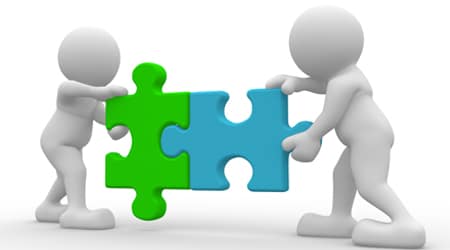Supercharging your organization’s sales enablement helps a team meet its best potential. This can be accelerated with the help of a tool capable of informing and enabling salespeople in a rapid and intuitive manner.
<< Discover How Smart Automation Can Make Your Sales Strategy More Agile! >>
The following three factors provide a pretty good baseline for the capacity of your sales enablement solution to boost your sales teams effectiveness in the field:
1. Individual-Based Training
Do you typically give your sales team a brief rundown of how the sales enablement solution works and then throw each member to the wolves? That’s not helping anybody.
Training should be individually focused and should involve plenty of role-playing. The salesperson should be able to contact a customer and immediately produce the pricing, marketing materials and everything else the customer requires to make a knowledgeable decision.
Training should also be so involved and tailored to the salesperson’s strengths and weaknesses that by the time your sales enablement solution is deployed in live sales scenarios, the guided selling process has become so refined and familiar that it can be leaned on without much thought required.

The right amount of training provides salespeople with the motivation and confidence they need to become successful. As far as sales are concerned, lack of knowledge is the root of fear. A salesperson who doesn’t know how to use the solutions in place may be apprehensive in the field, and that’s no way to win deals.
Proper training that involves role-playing helps work out the kinks in your sales process, allowing you to streamline your sales enablement protocols to make your solution even more effective.
2. Smart Content
Half the battle of the sales pitch is finding the appropriate content for the context. Including a questionnaire that generates the pricing and ideal sales solutions for any given customer give your sales enablement solution a major boost and helps overcome this challenge. Most software programs will provide options for customers, but they don’t necessarily pinpoint the customer’s exact needs. Your sales enablement needs to be different.
The ideal configuration involves a tree structure based on the customer’s individual requirements, allowing the salesperson to move easily from the initial conversation to pricing, and finally, to the contract or sale.
Get involved with your salespeople, and find out what materials they need and when. If the marketing team needs to provide additional marketing collateral, those items can easily be plugged in for instant retrieval.
Considering that 90% of marketing materials are never used, providing your salespeople with only the collateral they need when they need it puts them head-and-shoulders above their competitors.
3. Closed-Loop Analysis
With closed-loop reporting, the marketing team will be able to assess what worked and what didn’t for each salesperson on your team. What objections from customers caused hang-ups? What hiccups were experienced that caused customers to pause or remain firmly on the fence?
Proper and instant reporting, which is one of the major perks of using sales enablement and guided selling, provides vital information that gives everyone on your team the knowledge, tips, and know-how to become champions in the field. Even hard-to-reach customers can be cracked like a walnut when this knowledge is put into play.
It’s not enough to have sales enablement in place. Using tools like CPQ solutions right out of the box can help, but it’s proper configuration and constant communication with your team that gives your sales software a major power boost. Guided selling is the way to go if you want your team to become world-class, and these are just a few of the ways to make that happen.









